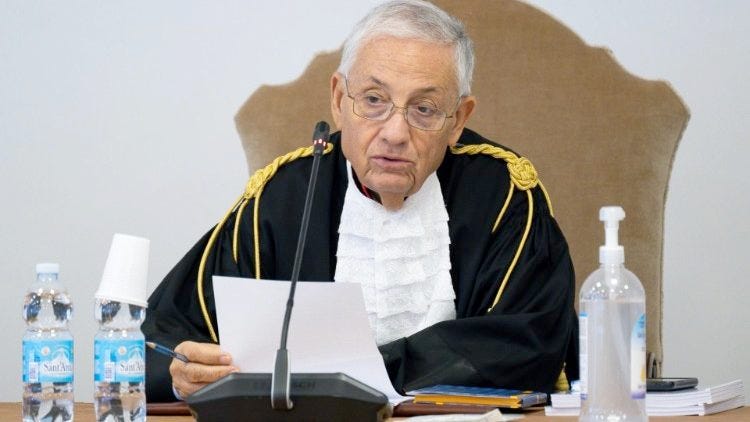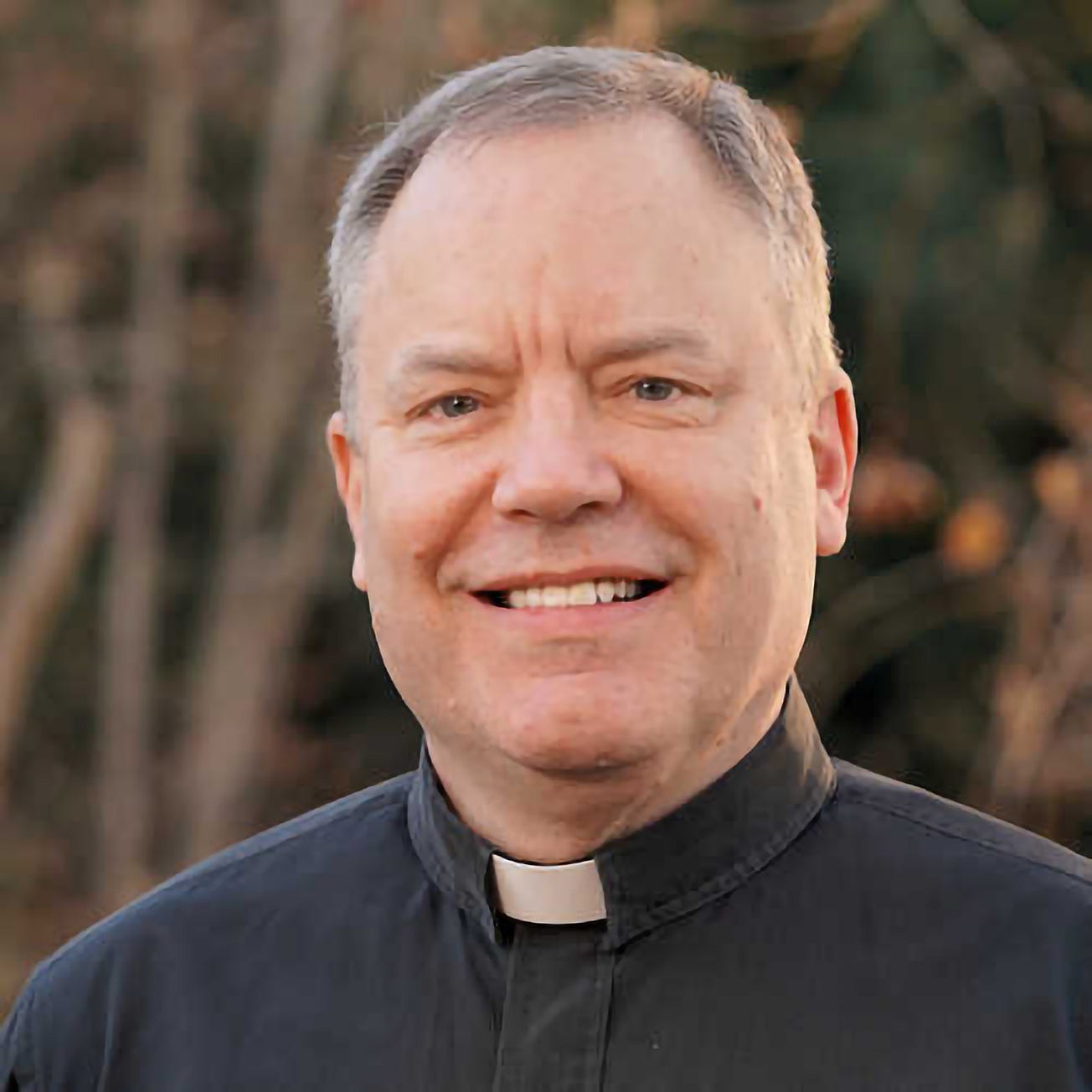The installation of Bishop Andrew Cozzens offered all the pomp and solemnity that a small rural diocese in northwestern Minnesota can muster in the middle of a historic blizzard.
Despite sub-zero temperatures and blowing snow outside, a brass quintet and a chorus of religious sisters filled a small brick church with the sounds of thanksgiving. A papal diplomat offered a new diocesan bishop the greetings and wisdom of Pope Francis.
The liturgy was beautiful. But the Dec. 6 installation of Crookston’s new bishop was a striking moment in the history of the Church because of a detail some might have missed.
Ron Vasek was in Crookston’s cathedral.
He had come to worship God, in the Holy Sacrifice of the Mass, with his new bishop. And Ron was welcomed, by his bishop, and by his Christian community.
Vasek is the Minnesota Catholic whose allegations against Crookston’s former Bishop Michael Hoeppner led to the first resignation of an American bishop under the aegeis of Vos estis lux mundi, a set of norms approved by Pope Francis in 2019.
For the Vaseks and those who have supported them, Cozzens’ installation ceremony felt like a moment of long-awaited justice, a triumph of hope, and certitude that God had been faithful.
The investigation into Hoeppner began with a charge that in 2015 he coerced Vasek, then studying to become a deacon in the diocese, to recant a claim that when he was a teenager, a Crookston priest molested him.
Vasek first told Hoeppner about the abuse in 2011.
In depositions released in November 2019, Hoeppner testified that he failed to order an investigation when Vasek first told him he had been abused, and that he did not contact the police.
Hoeppner admitted he knew his omission violated canonical norms, and said he did so because Vasek wanted confidentiality.
Hoeppner also admitted it was his idea for Vasek to sign a letter in 2015 recanting the abuse claim, but says Vasek wanted to recant the allegation. The bishop denied that he forced Vasek to sign the statement.
Vasek says he was forced to sign it, and had no intention of walking back his allegation.
He claims Hoeppner coerced him into recanting the allegation, by implying that he might not be ordained without doing so, and that his son, a priest in the diocese, could suffer retribution because of the claim.
Vasek’s son, Fr. Craig Vasek, was in Crookston’s Cathedral of the Immaculate Conception Dec. 6, along with most of the other 31 priests of the small diocese, to concelebrate Cozzens’ installation Mass.
Cozzens was appointed Oct. 18 to replace Hoeppner, who was forced to resign in April, 18 months after the Vatican investigation of his leadership had begun. Cozzens has gained a reputation in recent years for his work with abuse victims, while he has served as an auxiliary bishop in the Archdiocese of St. Paul and Minneapolis.
Cozzens’ installation felt like a moment of God’s providence, the Vaseks said.
For his part, Cozzens acknowledged diocesan struggles in his homily, which focused on hope and reconciliation.
“We have hope because God has come to save us, and he desires to continue to save us. God has shown us in Jesus that he will be faithful to his promises,” the bishop said.
“Christian hope does not ignore or downplay the reality of evil. Christian hope is not rooted in a vague optimism that things will be ok. Christian hope is rooted in the paschal mystery - the cross and the resurrection of Jesus,” Cozzens said.
“We are not afraid to face evil, we are not afraid to expose evil, not even afraid to acknowledge our sins and weakness, for Christ has conquered all this evil through his death and resurrection, and has given us reason to hope.”
“The Diocese of Crookston has been through difficulties and struggles. It doesn’t help to pretend these have not happened. We’ll face those difficulties and struggles. And we’ll do that together,” the bishop promised his new flock.
Cozzens said that Christians are called to “seek God’s forgiveness, and God’s healing.”
“We call this work reconciliation. It’s the work that Jesus came to do in the world — to reconcile us to himself and to each other.”
“God has given us the ministry of reconciliation— it’s what we do in the Church. We reconcile. We reconcile ourselves to God through confession and the sacraments. And then through God, we are reconciled to one another,” the bishop said.
The Church’s work of reconciliation, he added, “must create in each of us a missionary transformation. Every one of you here are called to be part of the missionary transformation of the Church, to bring the reconciling love of Christ to the world. That’s our mission.”
The bishop’s remarks were spoken to the laity, religious, and clergy of the diocese, some of whom told The Pillar they had come to the installation — despite frigid winds and snowfall — in hopes of seeing a new day begin, after a long period of struggle in the diocese.
Not in attendance at the installation was Hoeppner, who said after his resignation that he planned to move “somewhere warm” with his sister. The bishop’s resignation has been taken as a sign that Pope Francis’ promises to investigate episcopal misconduct, made after the 2018 scandal of Theodore McCarrick, will not be fruitless.
But some in Crookston have said they are frustrated Hoeppner was permitted to resign from diocesan leadership with no censure, taking the status of a retired bishop. While the bishop has admitted that he failed to follow canonical and civil reporting and investigative requirements, he has not faced any canonical charges, and it is unlikely he will do so.
At least three other American bishops are now facing Vatican investigations into their episcopal ministry; it is not clear whether Hoeppner’s resignation will set a precedent which allows bishops found to have acted wrongly in office to resign with no clarifying statement from the Vatican, and no formal canonical charges.
While that question remains unanswered, Cozzens focused Monday on the work to be done in Crookston.
“Today is a beautiful day,” Cozzens preached Monday, “but it’s not really about me. It’s about the Church here in Crookston.”
“Of course someone has to be the bishop, and that’s me,” he said to laughter in the church.
“But we are all called to be missionaries, and this is what the world needs from us! It is what the people of northwestern Minnesota need from us. It is the one thing that only we can do – proclaim the Gospel of salvation in Jesus Christ, and no one is exempt from this task.”
During his installation Mass, he also offered a small sign of his plans to address the hurt of abuse victims in the diocese.
Early in the Mass, Cozzens processed through the church, displaying the vellum decree by which Pope Francis had appointed him a bishop. As he passed the pew in which Vasek sat at the end, Cozzens seemed to pause, if only for a half-second, to ensure the man saw that a change had occurred in the Crookston diocese.
And then he promised to pray.
“This is my first goal before you,” Cozzens said.
“To be a man of prayer. A man who will spend time every day in adoration before the Blessed Sacrament. And I’d ask you to be people of prayer. Only if we’re deeply rooted in him will the Lord bring great fruit.”
“Jesus Christ is alive. He lives in us. He lives in Crookston. No matter the difficulties we have been through, he always wants to bring new fruit. This is the God we know. He turns sorrow and sadness into joy, he turns death into life, he makes all things work for good for those who love him,” Cozzens said.
“Lord Jesus, this is our prayer. Rain down your grace upon the Diocese of Crookston,” the bishop prayed.
Ron Vasek, seated in the cathedral, closed his eyes and nodded his head, offering that prayer along with his bishop.



